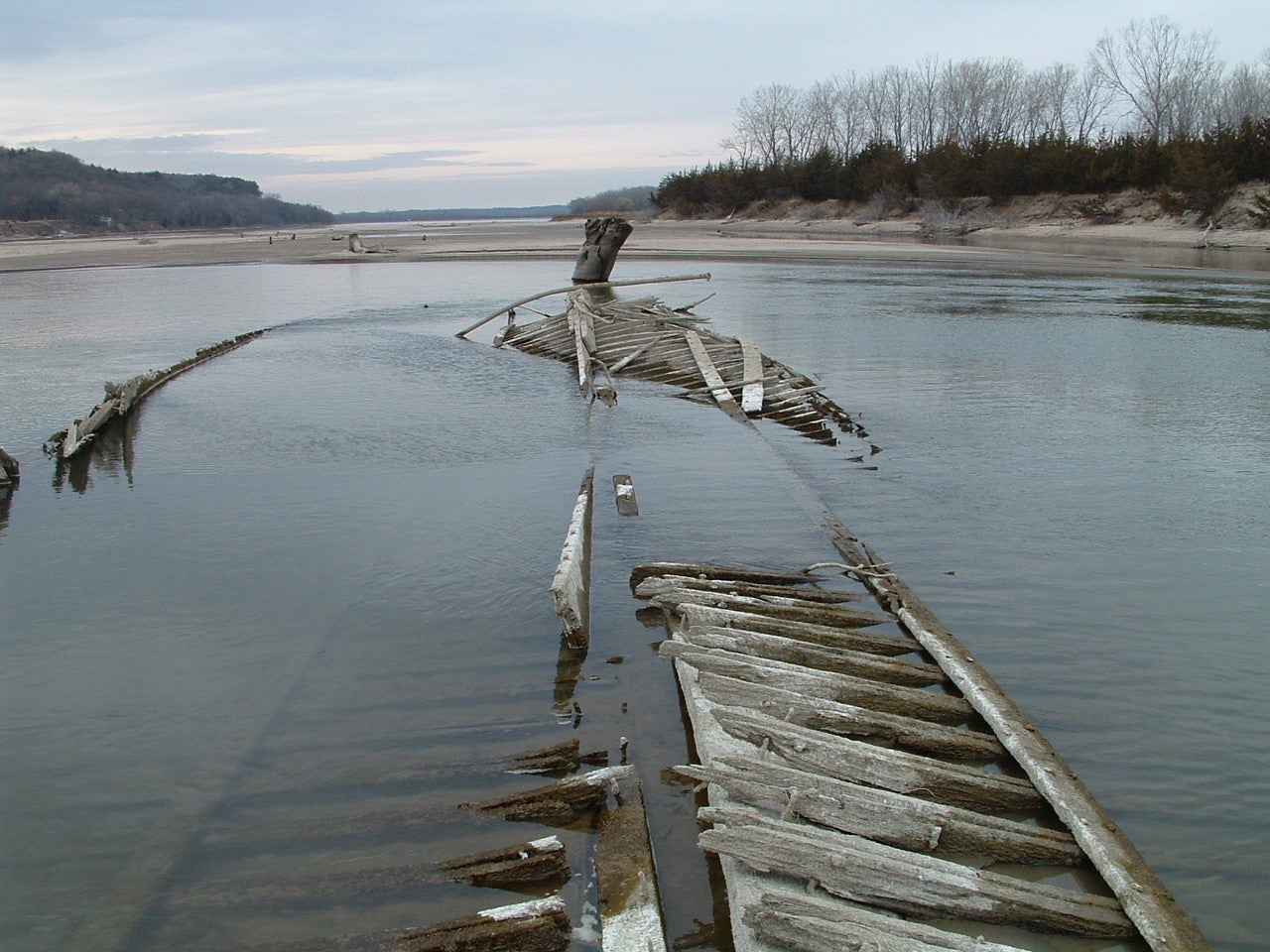Nebraska drought exposes remains of steamboat that sank in 1870
Drought has caused the water level in the Missouri River to fall significantly
With Nebraska experiencing an historic drought, water levels in the Missouri River have fallen significantly — exposing the reamins of a ship that sank in 1870.
The North Alabama was a steamboat that hit a snag and sank to the bottom of the river near Goat Island on the border between Nebraska and South Dakota more than 150 years ago as it headed for Montana with provisions for miners in the Rocky Mountain range.
The remains of the ship were not visible for the first time until 1904, and have almost continously been covered by the waters of the Missouri River since. But according to a post from the Missouri National Recreational River on Facebook, the low water level has made the ship visible again.
The North Alabama was en route to Yellowstone County in Montana from Sioux City, Iowa with $12,000 worth of cargo — some $300,000 today — when it sank. The ship’s captain died in the accident, though it is not known how many other people died along with him.
While a historical curisoity for travellers along Missouri River, the sudden appearance of the remains of the ship are a reminder of the severe effects of global warming that the world has endured this summer.

Severe droughts have depeleted water level in rivers in US, Europe, and Asia have fallen precipitously in recent months, exposing previously submerged historic artifacts including ships, statues, bombs, fossils, and even dinosour footprints in Texas.
Low water levels have been especially serious in Central Europe, where a severe drought has disrupted shipping routes and cruises along the Danube and Rhine Rivers. It’s a phenomenon that has concerned scientists, who have already warned that humanity has a limited amount of time in which to act to stop the worst effects of climate change.
Join our commenting forum
Join thought-provoking conversations, follow other Independent readers and see their replies
Comments
Bookmark popover
Removed from bookmarks